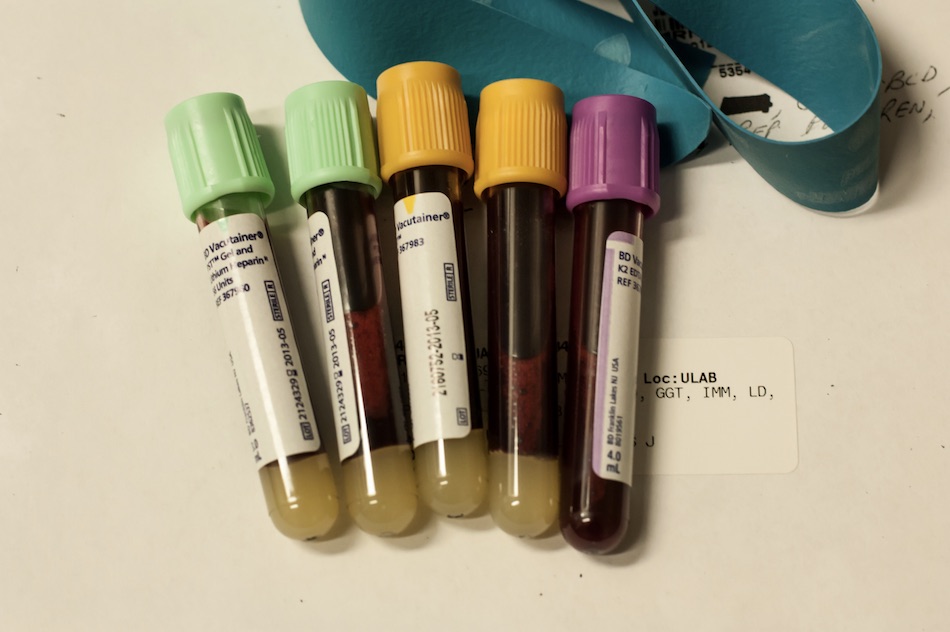As a kid, I did everything in my power to get out of Hebrew school on Sundays. I would often make up stomachaches, earaches, headaches — pretty much anything to get out of going.
Because I was the girl who cried wolf, when I actually was sick, nobody believed me at first. Maybe that's my own fault, but it's also the reason that my parents were so skeptical when I actually did start to get severe stomachaches.
For months, the aches would come and ago, and because they weren't consistent, my parents assumed that I was just faking them to get out of things I didn't want to do. In their defense, that does sound like something I would do. However, I was actually in serious pain, and I couldn't figure out what was wrong.
When my parents eventually noticed I wasn't making it up, they took me to see doctors to figure out what was going on. It wasn't until eight months later, though, that doctors were able to figure out I had Lyme disease.
Lyme disease is easily treatable, but when it goes undiagnosed, it can cause bothersome complications. Read on to learn about my experience with Lyme disease and how you can spot the symptoms.
What Is Lyme Disease?

Lyme disease is a bacterial infection transmitted via the bite of an infected tick. The disease is primarily transmitted by deer ticks and black-legged ticks in grassy and wooded areas.
According to the Centers for Disease Control and Prevention, approximately 300,000 people are diagnosed with Lyme disease in the United States annually. However, since the disease is so difficult to diagnose, it's likely that many cases are going undiagnosed and the true number is much higher.
What Are The Symptoms Of Lyme Disease?

The American Lyme Disease Foundation (ALDF) lists joint pains, chills, fever, and fatigue as some of the common early symptoms of Lyme disease.
If the disease continues to spread, other symptoms you might experience are a stiff neck and facial palsy.
Why Does Lyme Disease Often Go Undiagnosed?

Lyme disease is difficult to diagnose, especially if you're like me and never noticed having a tick on your body.
The CDC estimates that between 70 to 80 percent of Lyme disease patients develop the signature erythema migrans — or bullseye — rash after getting bitten by an infected tick, but for those who don't, it's hard to distinguish Lyme disease from other illnesses.

According to Dr. Phillip J. Baker, PhD, executive director of the American Lyme Disease Foundation, the only way to truly know whether you have Lyme disease is through a blood test approved by the FDA or CDC.
"People assume they have Lyme disease based on false results," Dr. Baker told LittleThings. "Because the symptoms of Lyme disease are so general, you can't really rely on them alone for definitive diagnosis. Unless you have a positive diagnostic blood test, there's no way of making any decisions that you have Lyme disease."
My Experience With Lyme Disease

For the most part, I was a healthy child growing up, though I did (and still do) suffer from chronic migraines.
Around the time I started seventh grade, I started to experience fatigue and pain like I never had before, starting in my head and stomach, and eventually spreading to my muscles and joints. As the pain would come and go, so my parents started to assume that I was just faking the whole thing to get out of school.
Still, for months, my parents schlepped me from doctor to doctor, and I was diagnosed with everything from IBS to the flu. No matter what, I just wasn't getting better.
One day, the stomach pains were so bad that my dad decided to take me to the hospital. It was at this point that he told me, "You're either going to the hospital or you can cut the act."
At the hospital, the doctor finally decided to test me for Lyme disease, and to everyone's surprise, the test came back positive.
I had never even considered Lyme disease as a possibility, especially since I never saw a tick on my body. Still, I was relieved to finally have a diagnosis after eight months.

Unfortunately, my experience with Lyme disease isn't uncommon, as many people who aren't actively looking for Lyme disease will mistake their symptoms for something else.
"The best way to describe [the symptoms of Lyme disease] are flu-like symptoms," said Dr. Baker. "Well, you may even have the flu. And there are other medical conditions that will cause symptoms like this, too."
According to Lymedisease.org, the illness is known as "The Great Imitator" because its symptoms are similar to many other diseases. Patients with Lyme diseases often mistakenly believe they have other diseases including chronic fatigue syndrome, fibromyalgia, multiple sclerosis, and depression.
Treatment

Thankfully, Lyme disease is easy to treat with a dose of antibiotics, and after just two rounds of antibiotics (after all, eight months is a long time to be sick), I was mostly back to my normal self.
It took a bit of time even after the rounds of antibiotics were complete for my stomachaches to completely subside, but Dr. Baker notes that lingering symptoms are not uncommon.
"Sometimes the symptoms will linger for a while after the infection is cleared because the bacteria leave a lot of their debris in tissues that can generate an inflammatory response and continue with the symptoms for a while after the infection has been cleared," Dr. Baker said. "But these go away after a while."
How To Prevent Lyme Disease

According to the ALDF, the best way to avoid contracting Lyme disease is to protect yourself as much as possible while in tick-infested areas.
When you are outside, make sure to wear light clothing that makes it easy to spot ticks and always scan for ticks as soon as you are back inside.
For women, the ALDF also recommends keeping long hair tied back. If you have a pet, it is also wise to check them for ticks at the end of the day — dogs are a common carrier of deer ticks!

I speak from experience when I say that having Lyme disease isn't fun. However, if you know what to look out for, it's both preventable and easily treatable.
There is a lot of misinformation out there about Lyme disease, how it's transmitted, and what it can actually do, so if you ever have any questions about the disease, refer to official sources like the CDC and the ALDF.
Don't forget to SHARE this important information with friends and family on Facebook!




